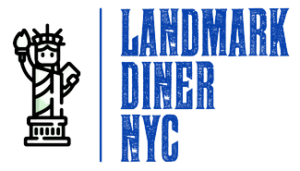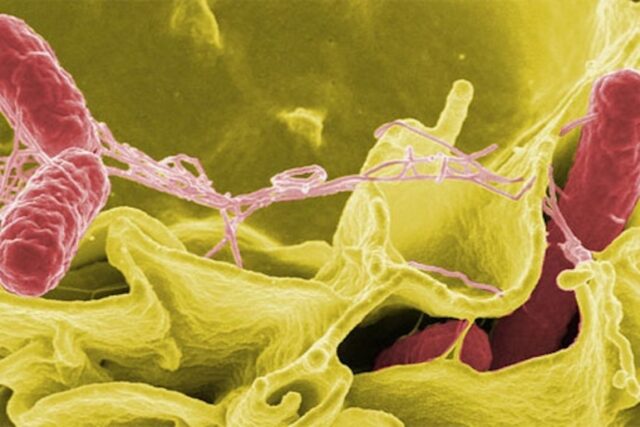Salmonella typhi is a highly fatal bacteria that can cause gastroenteritis, typhoid fever and death. Finding out which food was linked to this strain of salmonella might help us prevent future outbreaks from happening
Salmonella is a type of bacteria that can cause foodborne illness. Symptoms of salmonella include diarrhea, fever, abdominal cramps, vomiting, headache, chills and body aches.
Salmonella outbreaks are often linked to eggs, meat, and poultry, but the bacterium may also infect other foods including fruits and vegetables. Raw or undercooked eggs, raw milk, polluted water, and raw or undercooked meats are the foods most likely to carry Salmonella.
In this case, what is the most frequent food associated with Nontyphoidal salmonella?
Nontyphoidal Salmonella is a kind of Salmonella that is usually spread through consuming infected animal-based foods such eggs, meat, poultry, or milk. If raw veggies come into touch with animal excrement, they may get polluted. The fecal-oral pathway may also be used for person-to-person transmission.
Second, how does salmonella enter the food supply? Salmonella may be found in the intestines of people and other animals, such as birds. Humans are typically infected by consuming animal feces-contaminated foods. Animal-based foods, such as beef, poultry, milk, and eggs, are often polluted, but any food, including fruits and vegetables, may get contaminated.
So, what is the most common cause of food poisoning?
What are the most common causes of foodborne illnesses, fatalities, and hospitalizations? The most common causes of mortality were nontyphoidal Salmonella, Toxoplasma, Listeria, and norovirus. The most common infections were nontyphoidal Salmonella, norovirus, Campylobacter, and Toxoplasma. Norovirus was the most common cause of sickness.
What causes Salmonella Nontyphoidal?
Infections with nontyphoidal Salmonella are widespread and occur through direct and indirect contact with a variety of infected animals, their meals, and their excrement. Gastroenteritis, enteric fever, and localized infections are common clinical syndromes, with bacteremia occurring on rare occasions.
Answers to Related Questions
What are the earliest symptoms of salmonella infection?
The following are examples of possible indications and symptoms:
- Nausea.
- Vomiting.
- Cramps in the stomach.
- Diarrhea.
- Fever.
- Chills.
- Headache.
- There is blood in the feces.
What is the salmonella life cycle?
Salmonella’s intracellular life-cycle involves the bacterium’s entrance into the host cell, the creation of SCV (whose pH decreases from 6.5 to 5.5, as seen by the shift in the color of the SCV compartment), evasion of the host immune response, and finally host cell death through apoptosis.
What are the differences between the two kinds of salmonella?
Salmonella strains
There are two types of Salmonella: Salmonella Typhi, Paratyphi A, Paratyphi B, and Paratyphi C are among the bacterial strains that cause typhoid fever or paratyphoid fever. All other Salmonella strains are classified as non-typhoidal Salmonella.
How may epidemics of salmonella be avoided?
What can I do to avoid being infected with salmonella?
- Eggs should not be eaten uncooked or barely cooked.
- Beef, pig, and fowl should not be eaten uncooked or undercooked.
- Refrigerate food well before cooking as well as after serving.
- Before and after handling food, wash your hands thoroughly with soap and warm water.
- Before cooking meals on a kitchen surface, make sure it’s clean.
What is the salmonella vaccine?
There is presently no vaccination available to prevent salmonella infection. Antibiotics are the first line of defense against salmonella infections, but the rapid development of antibiotic resistance in certain strains of salmonella is a major issue.
Is salmonella a bacteria that may live for months?
Symptoms should fade away in 2 to 5 days in generally healthy individuals, although they may persist up to 2 weeks. Salmonella-infected people may continue to lose the germs in their feces for months to a year after being treated.
What are the many kinds of salmonella?
Salmonella is a Gram-negative bacterium genus of rod-shaped (bacillus) bacteria in the Enterobacteriaceae family. Salmonella enterica and Salmonella bongori are the two types of Salmonella. The original species, S. enterica, is split into six subspecies, each with over 2,600 serotypes.
At home, how do you deal with salmonella?
Lifestyle and Home Remedies It’s critical to keep hydrated as much as possible since salmonella infections may induce vomiting and diarrhea. 1? Increase your fluid intake with water, broths, sports drinks, caffeine-free beverages, or fruit juices if you’re an adult.
Is it true that inadequate personal cleanliness is the leading cause of food poisoning?
Personal Hygiene Issues
Foodborne diseases are most often caused by poor personal hygiene. By establishing an employee sickness policy, appropriate handwashing procedures, and a no barehand contact policy with ready-to-eat items, food businesses may foster a culture of food safety.
Is it possible to die from food poisoning?
Gastroenteritis symptoms such as stomach pains, diarrhoea, or vomiting, as well as flu-like symptoms, are common signs of food poisoning. Food poisoning may potentially lead to long-term complications such as renal failure. Food poisoning may result in death on rare occasions.
How long can food remain in a hazardous situation?
2 hours
What are the top five causes of food poisoning?
The following are the top five risk factors that are most often responsible for foodborne disease outbreaks:
- Temperatures of potentially dangerous meals that are too hot or too cold to hold.
- Food cooked at incorrect temperatures.
- Utensils and equipment that are dirty and/or polluted.
- Employee health and hygiene are poor.
- Food from untrustworthy sources.
What’s the difference between food poisoning and foodborne illness?
Both, however, have distinct connotations. An infection or intoxication caused by ingesting food contaminated with viable (living) bacteria or their toxins is known as foodborne disease. The intake of produced toxins causes food poisoning, which is a kind of foodborne disease.
What are the 5 Symptoms of Foodborne Illness?
Norovirus, Hepatitis A virus, Salmonella Typhi, Shigella spp., and Escherichia coli (E. coli) O157:H7 or other Enterohemorrhagic or Shiga toxin-producing E. coli are the five foodborne pathogens known as the ‘Big 5.’
What is your most essential tool for preventing foodborne illness?
Prevention Cooking or chilling have no effect on toxin levels. Purchasing plants, mushrooms, and shellfish from authorized, trustworthy vendors is the most essential method to avoid foodborne disease. When working with raw fish, it’s also crucial to keep track of time and temperature.
How long do you feel ill after eating rotten food?
Symptoms of Food Poisoning Cramps in your stomach and intestines, diarrhea, and vomiting may occur as little as 1 hour after consuming contaminated food and last for up to 10 days. It all depends on the source of the illness.
Cucumbers may cause food sickness.
According to the CDC, 113 additional instances of food poisoning have been connected to contaminated cucumbers as of December 30, 2015. Salmonella is a frequent and potentially deadly cause of foodborne disease, even if this particular strain (named Salmonella Poona) is uncommon.
How can I tell if my chicken is infected with salmonella?
There’s no way to tell during the incubation period, but when salmonella begins acting up, you’ll most likely feel it in your lower abdomen, along with some cramps. Salmonella symptoms such as nausea and vomiting are also quite frequent.
Is it possible to destroy salmonella by cooking?
Is it true that cooking kills salmonella? Salmonella may be killed by cooking thoroughly. When health authorities advise consumers not to eat possibly contaminated food or when a product is recalled due to a salmonella risk, that means don’t eat it, cooked or not. The stakes are too high.
Salmonella is a type of bacteria that can cause food poisoning. The most common sources of salmonella are poultry, eggs, and meat. When cooking these foods, it is important to always use clean utensils and cook the food thoroughly. Reference: how can salmonella be prevented.
Frequently Asked Questions
What food is Salmonella typhi linked to?
A: Salmonella typhi is a bacterium that causes typhoid fever. The most common ways people get infected are by handling poultry or drinking contaminated water.
What is the most common food source for salmonella?
A: The most common food source for salmonella is eggs.
Related Tags
- can salmonella kill you
- how does salmonella get into food
- how is salmonella transmitted
- where does salmonella come from
- salmonella treatment




